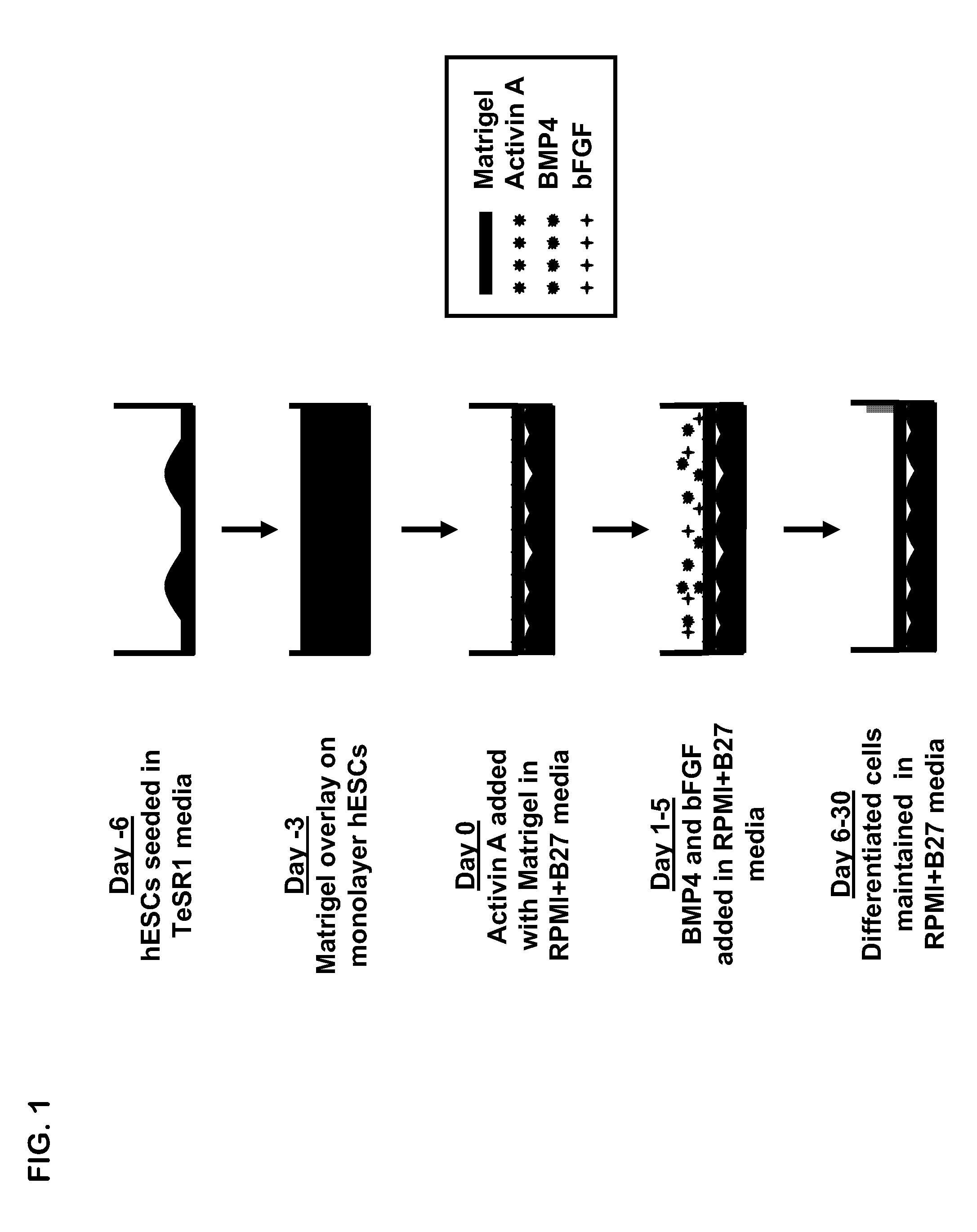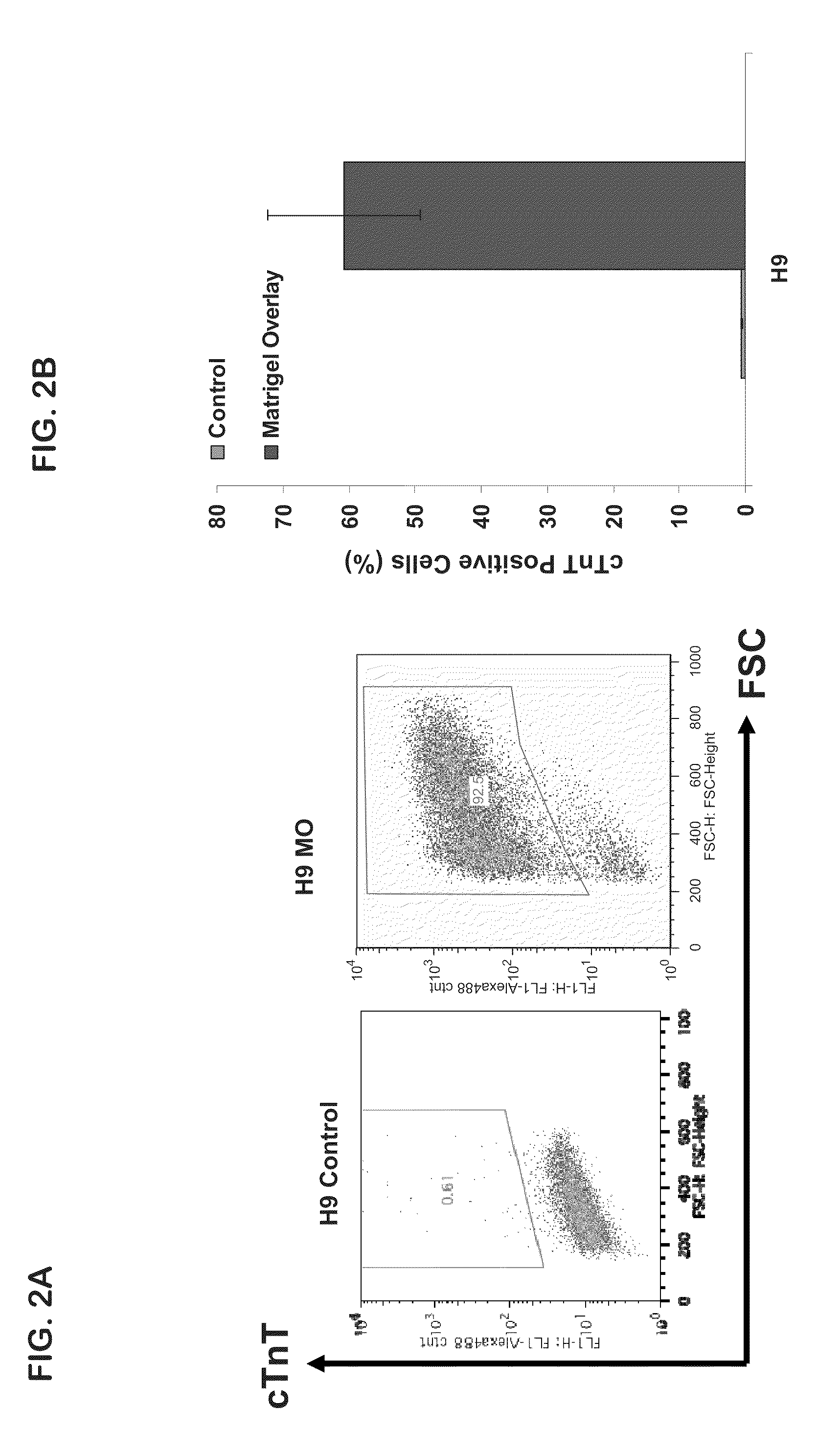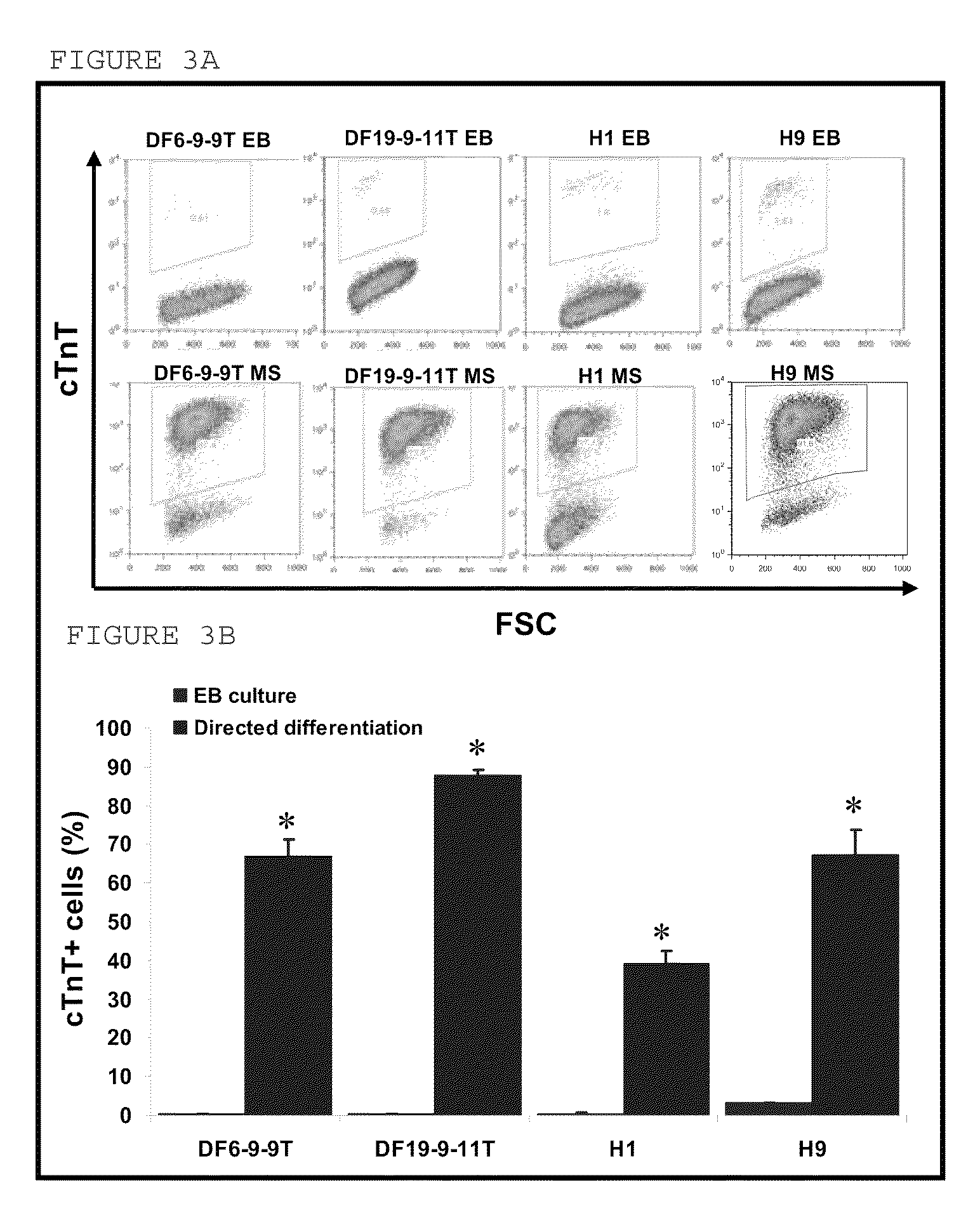Cardiac differentiation of human pluripotent stem cells under defined conditions using matrix overlay methods
a technology of matrix overlay and human pluripotent stem cells, which is applied in the direction of skeletal/connective tissue cells, drug compositions, biocide, etc., can solve the problems of ineffective eb formation of pluripotent stem cells through eb formation, inability of these vector-free ips cells to form ebs or differentiate into various cell types, useful for clinical application, and inability to achieve cardiomyocyte differentiation. , to achieve the effect of efficient cell differentiation
- Summary
- Abstract
- Description
- Claims
- Application Information
AI Technical Summary
Benefits of technology
Problems solved by technology
Method used
Image
Examples
example 1
EB Formation and Cardiogenesis by Vector-Free iPS Cells
[0039]Four human iPS clones (iPS-DF6-9-9T, iPS-DF6-9-12T, iPS-DF19-9-7T, and iPS-DF19-9-11T) were obtained by reprogramming foreskin fibroblasts using oriP / Epstein-Barr nuclear antigen-1 (EBNA1)-based episomal vectors, as described in Yu et al., (2009). The cell lines were maintained either on mouse embryonic fibroblasts for embryoid body (EB) formation or in feeder-free TESR™ medium for directed differentiation.
[0040]Contracting outgrowths formed on EBs from vector-free iPS cells. To form EBs, iPS cell colonies were detached from 6-well plates using 1 mg / ml dispase solution. EBs were cultured in suspension for 4 days in cardiac differentiation medium containing 20% FBS. The cells were subsequently plated onto 6-well plates and differentiated for up to 60 days. The percentage of contracting EBs was measured at day 6, 8, 10, 15, 20, 30, and 60. EBs from the four iPS clones generated contracting outgrowths (iPS-DF6-9-9T: 2.8±0.7%;...
example 2
Matrix Overlay-Directed Cardiogenesis of ES Cells and Vector-Free iPS Cells
[0043]The four human iPS cell lines iPS-DF6-9-9T, iPS-DF6-9-12T, iPS-DF19-9-7T, and iPS-DF19-9-11T were obtained as described in Example 1. iPS clones and the hES cell line H9 were maintained either on mouse embryonic fibroblasts for EB formation or in feeder-free TESR™ medium for directed differentiation, as described in Example 1.
[0044]Reference is made to FIG. 1 illustrating the matrix overlay method. hES cells and iPS cells maintained on mouse embryonic fibroblasts (MEFs) were seeded onto 6-well cell culture plates coated with growth factor-reduced MATRIGEL® (Becton-Dickinson Bioscience, Medford, Mass.) at a concentration of 0.5 mg / 6-well plate. Cells were cultured in TESR™ medium (The WiCell Research Institute, Madison, Wis.) for 5 days and were singularized using Versene (Invitrogen) (Day-6). Cells were seeded at a density of 100,000 cells / cm2 on 6-well plates. When cultures became confluent after 3-4 d...
example 3
A Matrix Overlay Promotes Epithelial-to-Mesenchymal Transition
[0050]The four human iPS cell lines iPS-DF6-9-9T, iPS-DF6-9-12T, iPS-DF19-9-7T, and iPS-DF19-9-11T were obtained as described in Example 1. Human ES cell lines of H1, H9 were used as comparison. The iPS cells and ES cells were maintained on irradiated MEFs at a density of 19,500 cells / cm2 in 6-well culture plates (Nunc, Rochester, N.Y.). Both iPS and ES cells were maintained in DMEM / F12 culture medium supplemented with 20% KnockOut serum replacer, 0.1 mmol / L non-essential amino acids, 1 mmol / L L-glutamine (all Invitrogen), and 0.1 mmol / L β-mercaptoethanol (Sigma). In addition, the iPS cell medium was supplemented with 100 ng / ml zebrafish basic fibroblast growth factor (zbFGF), purified from a bacterial expression system, and the hES cell medium was supplemented with 4 ng / ml human recombinant bFGF (Invitrogen).
[0051]Whole well staining for cardiac markers was performed by seeding the pluripotent stem cells on glass coversl...
PUM
| Property | Measurement | Unit |
|---|---|---|
| mean diameter | aaaaa | aaaaa |
| diameter | aaaaa | aaaaa |
| concentration | aaaaa | aaaaa |
Abstract
Description
Claims
Application Information
 Login to View More
Login to View More - R&D
- Intellectual Property
- Life Sciences
- Materials
- Tech Scout
- Unparalleled Data Quality
- Higher Quality Content
- 60% Fewer Hallucinations
Browse by: Latest US Patents, China's latest patents, Technical Efficacy Thesaurus, Application Domain, Technology Topic, Popular Technical Reports.
© 2025 PatSnap. All rights reserved.Legal|Privacy policy|Modern Slavery Act Transparency Statement|Sitemap|About US| Contact US: help@patsnap.com



